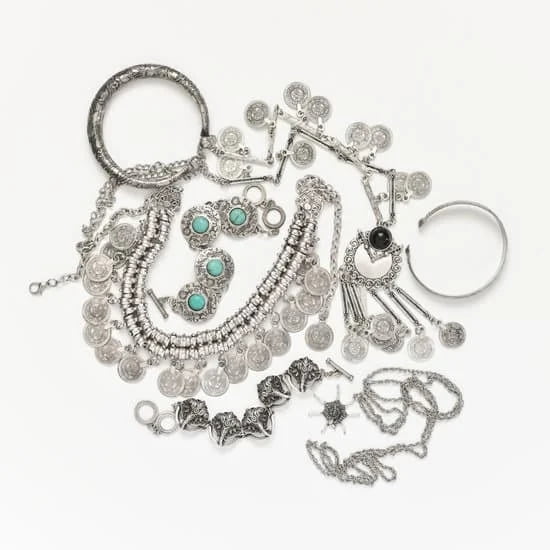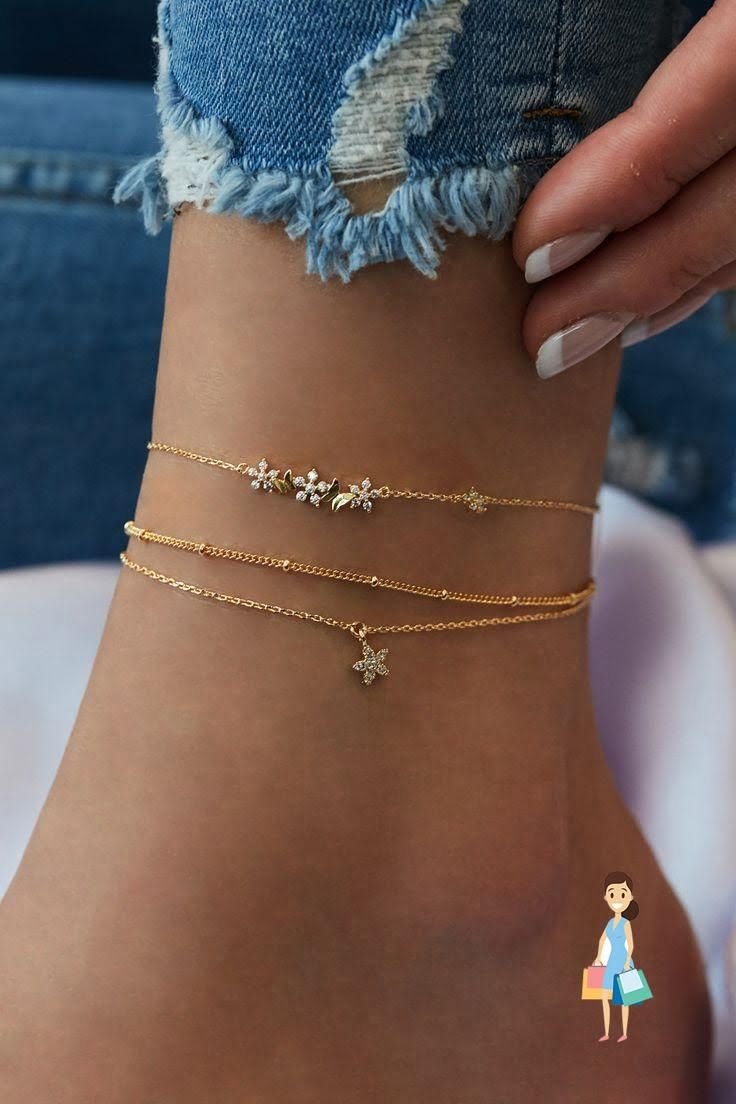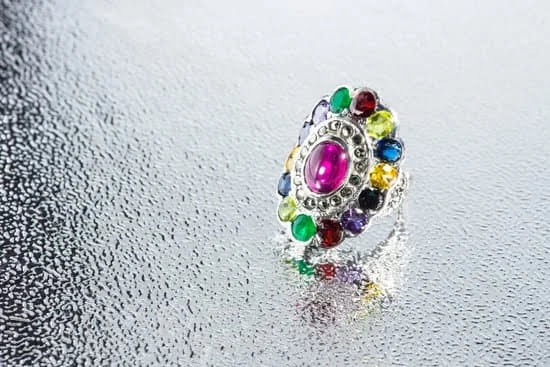Introduction
The distinctive look and feel of Bakelite jewelry sets it apart from other materials. Distinguished by its intense yellow or reddish-brown color, Bakelite, also known as ‘catalin’, was popularized in the 1920s and 1930s. Its slippery feel and lightweight properties made it a great material for art deco designs – while its durability meant that these glamorous pieces have now become collectable antiques. As Bakelite is incredibly resilient, correctly identifying genuine vintage items can be tricky without proper testing.
In order to accurately test for genuine Bakelite jewelry, several methods should be employed. One of the most common ways bakelite jewelry is tested is with a hot water test. To conduct this test you will need a cup of warm water and drops of 409 multi-surface cleaner. The 409 acts as a type of acid that acts on certain plastics. Place the suspected piece in the warm water and add a few drops of 409 – if the piece turns yellow it is not Bakelite but some other easily-scored plastic. If you don’t see any color change when adding the 409 then it could be genuine Bakelite but to confirm you should use a simichrome polish test or x-ray florescence test as well.
Simichrome polish functions similarly to makeup remover—it dissolves a bit of material from beneath the surface after rubbing it on the surface vigorously with a cloth – while an x-ray florescence test will determine radioactivity levels which in turn give off clues as to whether or not your piece is made from bakelite or another material such as celluloid (another popular material used decades ago). If there are distinct variations in radioactivity between different parts it’s not likely making use of bakelite, so further testing may be necessary for true confirmation.. Finally, there’s always the scratch test which tells you what kind of plastic your item might be without necessarily confirming bakelite – simply scrape lightly across one part to determine how hard or soft it is relative to other plastics such as epoxy or phenolic resin.
Defining Bakelite Material and its Characteristics
Bakelite is a type of plastic material known for its resistance to water and heat. It was invented in 1907 by Belgian-American chemist Leo Baekeland, as the first fully synthetic plastic. Bakelite is formed by heating phenol formaldehyde resin, which produces a hard, glossy surface. When heated, it shrinks and forms thicker sheets with no residual stresses or shrinking, making it ideal for bonding other different materials together.
When it comes to jewelry, Bakelite is most known for its bright colors like green, yellow, red and pink. Although sporting a glossy sheen on the outside, it was still quite porous allowing for dyes and colors to be easily mixed into the forms when molding this material. Because of this rare combination of characteristics –resistance to heat and water as well as vibrant colors– Bakelite jewelry remains highly coveted today by collectors.
To test whether an item is made from Bakelite or not there are several methods that can be used. The hot water test involves immersing the item in hot but not boiling water and then sniffing it; if the piece smells like camphor then it is likely bakelite. Additionally you can also rub some 409 cleaner on the piece which will leave a yellow stain if it’s bakelite or no reaction if it isn’t. Alternatively you may rub some Simichrome polish on the area which will turn orange or pink if bakelite and no color change otherwise. Lastly another test you can do is to check for static electricity by rubbing two pieces together; true bakelite items tend to create static electricity when rubbed against each other whereas faux items cannot generate such charge between themselves.
Different Types of Bakelite Jewelry
Testing for Bakelite jewelry can be done in a few different ways. One is the hot water test, where you place a drop of hot water on the piece of jewelry to see if it gives off an odor similar to formaldehyde, which indicates it is made of Bakelite. Another type of test you can do is placing a drop of 409 cleaner on the jewelry. If the jewelry turns milky white and bubbles, then the piece is likely Bakelite. Additionally, rubbing your finger over the surface should leave deep scratches which also suggests that its made from Bakelite.
When it comes to its design, Bakelite jewelry varies greatly and each piece is unique. It’s common to find items such as bracelets, necklaces, brooches/pins, rings and earrings. The designs can range from simple and understated pieces with minimalistic geometric patterns or more ornate designs featuring flowers or animals carved into the material. Colors vary widely too; you may come across greenish hues or pinky-brown tones depending on its composition and age.
Guidelines for Assessing Quality Bakelite Pieces
When assessing for quality Bakelite jewelry, the first and most important factor to consider is if it passes the hot water test. Taking a cotton swab or cloth and moistening it with hot water, rub the piece of jewelry lightly. If a distinct scent such as camphor emerges, it is often indicative of an authentic Bakelite piece. However, as this process can cause fading or even discoloration, it should only be used on small surface areas. Another effective method to use would be the Simichrome polish test which involves applying a small amount of polish to the surface of the jewelry and then rubbing with a soft rag. The presence of yellow coloring on the cloth is positive confirmation that your piece is made from Bakelite plastic material. An additional verification tool to used is an electric circuitry tester which identifies materials based on electrical resistance which will determine if a piece is Bakelite or not. A final recommendation for checking for authenticity involves using a UV Lamp too identify fluorescing pieces like those found in bright reds and yellows when placed under these lights from genuine Bakelite pieces. Following these guidelines should assist in determining whether you are looking at authentic Bakelite jewelry or just another plastic product masquerading as bona fide vintage item.
Benefits of Testing for Bakelite Jewelry
Testing for Bakelite jewelry is an important step in appraising antiques and vintage pieces. Bakelite can often be identified by its distinctive odor when warm, and it is especially sought after by vintage enthusiasts due to its rarity and unique qualities amongst other plastics. However, without proper testing, it can be difficult to accurately identify bakelite jewelry due to its similarity in appearance to other plastic materials.
The main benefit of testing for Bakelite jewelry is that it allows people to know with confidence whether or not a given piece is genuine. By using the simichrome polishing compound test, where a small amount of the compound is applied to a cotton swab and then rubbed on a discreet spot of the item being tested, one can determine if their piece is actually made of Bakelite or not. Another popular way of testing involves performing the hot water test which requires soaking the suspected pieces in hot soapy water; true Bakelite pieces will remain undamaged while non-Bakelite items may melt or become discolored.
In addition to enabling people to authenticate vintage bakelite jewelry that they are buying or already possess, conducting accurate tests will also help preserve its value as an antique item which can be more meaningful than any monetary worth assigned to it. Knowing that a particular piece has been well-tested also provides peace of mind in knowing that you’re investing into something that’s genuinely valuable and worthwhile in the long run.
Visual Signifiers to Look for When Identifying Bakelite Jewelry
When testing for Bakelite jewelry, you should look out for several visual signifiers to make sure it is genuine. Firstly, check the weight of the piece – genuine Bakelite is typically quite heavy compared to other types of jewelry material like plastic and celluloid. Secondly, hold the piece up to your nose and sniff it – Bakelite has a distinct odor similar to formaldehyde. Thirdly, examine the surface of the jewelry to see if there is a soft velvety sheen or ‘crackle’ finish on it; this was characteristic of some Bakelite pieces produced in the 1930s and 1940s. Additionally, you can use a black light or ultraviolet lamp (UV-A) over the piece; genuine Bakelite will usually fluoresce an orange-red color when viewed under UV light. Finally, you can also conduct a ‘hot water test’ on small jewelry items where you place them in a cup with warm water (not boiling!) for several seconds and then remove them; if it creates a paint-like texture on its surface, then it is most likely made from genuine Bakelite.
Various Tests for Bakelite Material Identification
The simplest test to identify items made of Bakelite is the Hot Water Test: submerge a corner of the item (or a separate piece cut off from it) into hot water for about 30 seconds. Authentic Bakelite will give off a distinct formaldehyde odour.
The second test, called a Simichrome Test, requires Simichrome polish, available from many hardware stores, jewellery stores and online retailers. Rub a small amount of the polish onto the item or test piece. If it is Bakelite it will turn yellow after about 10 seconds.
A Third option which is helpful for distinguishing other types of plastics from Bakelite is called the Rub or Scratch Test. Take your fingernail and firmly rub/scratch one corner or edge of the item being tested. If it is made from Bakelite there will likely be no visible marks as a result from scratching due to its durability. Conversely, plastics that are not Bakelite may scratch easily leaving evidence of you finger’s work behind.
Test for Bakelite with Silver Nitrate
To test for Bakelite jewelry, one must first obtain a supply of silver nitrate. Silver nitrate can be purchased online or at most chemical stores, and is very affordable. Once the silver nitrate has been obtained, it can then be applied to the suspected jewelry using a cotton swab or soft cloth. If the jewelry is not made of Bakelite, the silver nitrate will typically leave white or yellowish stains or marks on the piece. However, if it does indeed turn out to be Bakelite, within a few moments after applying the silver nitrate you should see an almost immediate reaction on the surface of the item that ranges from a brownish-orange discoloration to various shades of yellow and tan. If one knows what Bakelite looks like in terms of color and texture they will be able to distinguish between true Bakelite items and those that are falsely advertised as such.
The Simichrome Test for Bakelite
The Simichrome Test is the most accurate and reliable method for testing Bakelite jewelry. To test the Bakelite, put a small amount of Simichrome polish on a cotton swab and rub it into the jewelry. Bakelite will turn bright yellow if it is genuine, while other materials may turn other colors or remain unchanged. For best results, allow a minute or two for the polish to settle before checking for color change. Other methods of testing Bakelite include heating and immersion tests, which involve putting the jewelry in boiling water and assessing its reactions. However, not all Bakelite pieces react in these two tests in the same manner; thus an experienced appraiser may be needed to access their authenticity. It’s also important to note that due to manufacturing changes over time, some newer versions of vintage Bakelite may have different chemical combinations from their original formula — yet still retain their distinctive yellow color when tested with Simichrome polish!
Conducting Tests with Careful Precision
When it comes to properly testing Bakelite jewelry, care and precision must be taken in order to get accurate results. There are a few ways to test Bakelite jewelry:
1. Testing with Simichrome Polish – This is the most common method used for verifying Bakelite jewelry. To do so, use a small amount of polish and apply it to an inconspicuous area on the piece. If the polish turns yellow or reveals the underlying color of the plastic beneath, it is not Bakelite. However, if no change occurs, it is likely authentic.
2. Hot Water Test – A simple yet effective method is by holding a hot cloth or water over an area to see if any odors are released; this means that it’s not genuine Bakelite. If no odor is produced, then your piece might be real!
3. Checking for Special Texture – Genuine Bakelite usually has a distinct texture that you can feel when running your finger along its surface, whereas fakes can often have a smooth plastic look and feel. Additionally, make sure you’re looking at bright colors as faded colors are indicative of a fake material as well.
It’s important to take extra precautions while testing vintage jewelry pieces like Bakelite because its antique nature could cause damage or destruction if handled too roughly during the test process . Use appropriate amounts of cleaning products like Simichrome Polish and keep any exposure to intense heat reduced as much as possible when using the hot water test method in order to ensure accurate results without harming your prized possessions!
Analyzing Results After Testing for Bakelite Jewelry
After performing a test to identify whether jewelry is made from Bakelite or not, it is important to analyse the results. If a piece of jewelry was found to be Bakelite, the next step would be to assess its quality and condition. This can involve closely studying the piece for any signs of wear and tear, discoloration or deterioration due to age. Additionally, one might want to check if it possess any identifying marks like brand marks embossed on it or any spots indicating certain features like colors or designs that are common among Bakelite pieces.
Another key consideration when testing for Bakelite jewelry would involve assessing its possible monetary value. Different kinds of antique jewelry with different characteristics have different values depending on their make and condition. This part of the assessment usually involves researching the piece’s model year, examining comparable pieces in the market at present and identifying potential buyers who may be interested in it.
Overall, analyzing the results after testing for Bakelite jewelry provides useful insights into its features as well as potential value which can help an individual make informed decisions about investing in vintage items.
Storing, Maintaining and Caring for Bakelite Jewelry
Testing for Bakelite jewelry is not difficult. The best way to test for Bakelite is to use the hot water test. Pour some hot (but not boiling) water into a cup and add a spoonful of salt, stir it until the salt dissolves. Dip part of the jewelry piece into the hot water for about 10 seconds. Then smell it and feel it quickly with your fingers, as it may be too hot to touch with bare hands. If the jewelry piece smells like formaldehyde then you have Bakelite or Catalin jewelry in your hands! Additionally, modern black lights are another inexpensive way to test for Bakelite and Catalin if you are unsure. Place the subject up to a UV light and observe how it glows or fluoresces coloring under UV rays, typically yellowish or greenish tinted outbursts – if this reaction is observed then your piece is likely made of Bakelite/Catalin plastic material.
When storing and maintaining Bakelite jewelry pieces there are several things to keep in mind. Firstly, avoid contact between your pieces and heavy objects that can rub against the luscious layers of color that adorn these one-of-a-kind jewels, as contact will result in scratching their surfaces over time. Additionally, never expose them to heat as this could cause discoloration or even melting of plastics found within certain varieties of bakelite/catalin jewelry blends used today. Similarly, harsh chemicals should also be avoided at all costs – when cleaning opt for a gentle soap with warm water should suffice along with a soft cloth wipe down on occasion throughout the year(s). Finally, when attending events where partygoers might be leaning on each other or embracing make sure you remove your bakelite/catalin jewels for safe keeping!
Conclusion
Testing for Bakelite jewelry is an easy process that can help to identify a possible Bakelite collectable. First, put a small dab of 409 or other non-acetone based cleaning product on the suspected jewelry. If it has Bakelite in its composition, this will cause the jewelry to become slightly slippery and the color may change slightly. Second, use the hot water test: submerge the item in very hot water and let it sit for 30-90 seconds. Genuine Bakelite should not melt or become soft when exposed to hot water, but items containing imitation materials will soften and distort shape. Finally, odor test the piece: rub two pieces together and sniff; genuine Bakelite will have an acrid odor similar to formaldehyde or camphor. After these tests, if you still cannot be certain of its type of material, then contact an experienced appraiser who can examine in more detail with special tools such as microscopes.

Welcome to my jewelry blog! My name is Sarah and I am the owner of this blog.
I love making jewelry and sharing my creations with others.
So whether you’re someone who loves wearing jewelry yourself or simply enjoys learning about it, be sure to check out my blog for insightful posts on everything related to this exciting topic!





